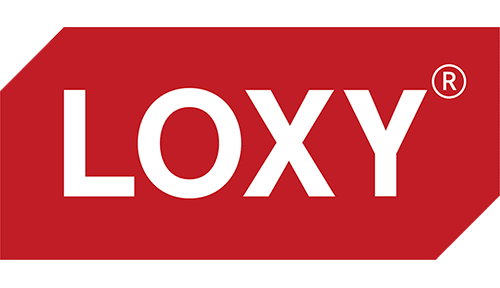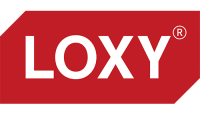Loxy® Seal Certifications
LOXY ® seam sealing tapes fulfill some of the toughest requirements in the world, through Öko-Tex standard 100 [certificate Ö 05-136].
Explore the relevant standards
- ISO 3175
- ISO 6330
- Oeko-Tex® Standard 100
ISO 3175
The ISO3175 standards for certification relates to the testing of material for suitability in dry cleaning. This standard is actually broken into four parts.
- ISO 3175-1:1998 Method for assessing the cleanability of textiles and garments
- ISO 3175-2:1998 Procedures for testing using tetrachloroethene (perchloroethylene)
- ISO 3175-3:2003 Procedure for testing using hydrocarbon
- ISO 3175-4:2003 Procedure for testing using simulated wet cleaning.
Defining the ISO 3175 Certification
Each certification uses a standard picture or pictogram to allow for easy identification on labeling and tech or data sheets. The standard pictogram for ISO 3175 will vary somewhat. This is due to the fact that the testing procedures of ISO 3175 relate to 4 different variables (2 of which are chemical treatments).
Testing for Garment Cleaning
It’s important to note that when materials are testing for suitability in dry cleaning, the individual material is what is tested. The ratings given and recommendations for chemical use or treatment method are merely recommendations for the material. That recommendation does not transfer to an entire garment (unless stated). Manufacturers need to consider the entire garment and broad recommendations for dry cleaning suitability based on the individual ratings of the fabrics and materials used in production.
ISO 3175 Dry Cleaning Tests on Solvents – Tetrachloroethene (perchloroethylene)
This solution is also referred to as (perc) and is a common cleaning solvent used in the UK. Most textiles and leather garments as well as safety garments will carry care labels displaying the symbol for this solvent, which is an uppercase P in a circle. This is one of the most used solvents and, when tested, the material or garment will be listed with either a 1 or a 2 listed next to the P. 1 denotes normal process cleaning and 2 denotes sensitive processes.
ISO 3175 Dry Cleaning Tests on Solvents – Hydrocarbon
While hydrocarbon is a bit milder than Tetrachloroethene it’s used less frequently in the dry cleaning industry. It’s suitability for use is shown by a number 3 or number 4 next to the letter F. The 3 denotes a normal process with the 4 representing a more sensitive process. Because Hydrocarbon is a milder solvent, it can still be used in many cases where the P symbol is shown.
An important item to note is that hydrocarbon is suitable for cleaning most textiles however as less volatile cleaning solvent it requires higher drying temperatures or a longer cycle of drying. In the case of fabrics or materials that are heat sensitive, or a material with certain adhesives, their performance may be affected by prolonged or heightened temperature exposure.
ISO 3175 Wet Cleaning Testing
Next to dry cleaning, wet cleaning is the safest method for garment cleaning. The garments and materials are tested utilizing gentler wash cycles, a variety of soaps or detergents and various types of pressing and reforming equipment based on the fabric types. Wet cleaning is designed to be a non-toxic alternative to dry cleaning.
ISO 6330
Test methods for ISO 6330 include ten different washing procedures based on variable equipment including front loading machines or 11 different procedures using top-loaders with agitators. In addition, the test utilizes five drying procedures that includes:
• Line drying
• Drop dry
• Flat dry
• Flat press
• And tumble dry
Defining ISO 6330
ISO6330 is used as a standard measure for domestic washing. ISO6330 however is not a reliable indicator for wash methods and garment performance using industrial washing and finishing methods. For industrial washing, garments are tested using ISO 15797.
ISO 6330 Test Methods
To perform a complete ISO 6330 test, the testing facility or agency runs the garment or specimen in an automatic washing machine and is dried according to specified procedures. The standard washing procedure gauges the ability of the garment or specimen to withstand normal drying using common detergents. Once washing is completed the tumble dry is used in order to determine the drying capacity of the garment or specimen.
The Need for Domestic and Industrial Testing
ISO 6330 is used to outline standards for fabric and materials that are not suitable for industrial washing, which applies harsh chemicals and variable handling methods which can damage clothing, garments and other materials in part or in whole.
Often ISO 6330 covers work wear and safety garments is bonding films, which often can’t tolerate the higher temperatures and chemicals used in industrial washing. With Loxy lines, another example is reflect surfaces which can quickly lose their finish and reflective power if put through unnecessary industrial washing.
Why ISO 6330
ISo 6330 helps certify the standards that companies like Loxy set on their garment and clothing lines as well as the materials they provide to garment manufacturers. At Loxy, we focus on setting the standard in quality and as such we maintain strict adherence to minimum requirements in:
• Fabric strength
• Thread and seam durability
• Colour performance
• Colour fastness
• Physical performance
ISO 6330 tests all materials per our recommended settings and certifies that the products are safe for domestic washing without serious or potential degradation due to recommended wash settings. Our requirements on materials, safety garments and other accessories are intended to promote consistency in work wear and other fabrics supplied to our partners – specifically to make our partners aware of the various properties of our materials and fabrics, garments, etc. and to keep this information in mind when utilizing those materials and fabrics to design garments.
For additional information on which products and materials are ISO 6330 standard, please refer to the technical data sheets or contact us today to speak with a representative for Loxy.
Oeko-Tex® Standard 100
Garments and materials worn by professional workers come in contact with skin throughout the duration of their work day. Because of the environments they work in, water transfer and perspiration are normal. In conditions like these, especially where heat is involved, it’s easy for chemicals and other solvents and dyes used in the production process to leech from the clothing and transfer from the skin. Oeko-Tex standard 100 provides testing for harmful substances. This ensures there is no health risk in wearing the textiles.
Before the 1990’s there was no standard, reliable product label for production companies, consumers or professionals to assess the safety of textiles or material components. Oeko-Tex holds those material suppliers, like LOXY, to modern standards of safety.
Defining the Oeko-Text Standard 100 Testing Process
The labs providing the testing of textiles go through approximately 100 test parameters based on international testing standards used around the world as well as other accepted testing methods. Beyond standard testing procedures, Oeko-Tex also uses simulation testing to take into account possible ways in which an individual could potentially be contaminated or poised – through the skin, through inhalation, etc.
The tests that are performed depend on the type of chemicals that are used at each stage of the process, as these chemicals produce a change in the textiles. Testing procedures also vary depending on the use of the garment, as the more intense and intimate the exposure is to the garment (the more it comes in contact with the skin) the stricter the testing and limit values.
Testing includes
- Substance prohibited by law such as carcinogenic dyes or related chemicals
- Substances regulated by law including softeners, heavy metals, pentachlorophenol and formaldehyde
- Substances that are not regulated or prohibited by law but can have an adverse effect on health, including pesticide, tin-organic compounds, and dyestuffs.
- Parameters that include colorfastness and skin-friendly pH values (precautionary to safeguard the health of the wearer)
Certification
Certification in the Oeko-Tex 100 allows the use of the branded logo for Oeko-Tex, providing consumers with the knowledge that any materials and safety garments from Loxy have been tested and certified safe for professional use. Additional, any materials such as the Loxy reflective tape lines and seam sealing tape used in leisure or other activities and environments are certified to be safe for individual use in any environment.
Materials will be labeled with the Oeko-Tex branded certification stating “Confidence in Textiles – tested for harmful substances according to Oeko-Tex Standard 100” with the appropriate test number listed on the certification to show the material satisfies the requirements of a common product class.
Oeko-Tex Product Classification
There are 4 classes of products where materials and textiles are broken up depending on their intended use and overall exposure.
Oeko-Tex Class 1 – These are textiles for small children and babies (infants and newborns) up to the age of 3. This includes underwear, crawling or romper suits, bedding and linen, soft toys, etc.
Oeko-Tex Class 2 – This product class includes textiles that, when used as intended, come into direct contact with skin over a large surface area. This includes bedding and linen, underwear, blouses, robes, etc.
Oeko-Tex Class 3 – This is a product group that has minimal skin contact or does not come into contact with skin. Jackets, coats, liners, etc.
Oeko-Tex Class 4 – Primarily furnishing materials that can include table linens, curtains, wall and floor coverings, machine and equipment covers, etc.
When tested by Oeko-Tex, the textiles will be processed and allocated into one of the four listed categories. The assigned category will be listed clearly on the test certification.
Adapted from Oeko-Text public material and information

